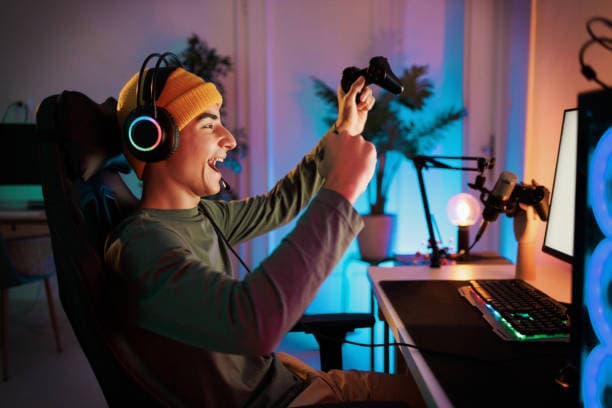In the era of globalization, video games act not only as a source of entertainment, but also as a powerful channel of intercultural exchange, making language one of the main tools of this process. Games achieve true universality when they are carefully adapted to new cultures and when attention is paid to even the smallest details of in-game communication. As a result, language becomes the key to the hearts and minds of participants around the world, allowing them to interact more deeply with each other, immerse themselves in stories, and enjoy the gameplay. In this essay, we examine how language influences the gaming industry, enhances cultural diversity, and fosters cross-linguistic communication among gaming groups.
The Skill of Localizing Video Games
Localizing a game involves a multifaceted procedure that extends beyond merely translating textual content into a different language; it also necessitates thorough cultural analysis of the intended audience. It encompasses a number of key elements:
Translation of text
Text translation is a basic component of localization. This encompasses everything from character dialogues, descriptions of tasks and items, to menus, the user interface, and in-game support. However, translating text in games – www.gamezoom.net/artikel/Poker_als_Kunst_des_Bluffens_Geheimnisse_des_erfolgreichen_Bluffs-54116 goes much beyond simply translating words from one language to another. A translation needs to be creative in order to convey the comedy, cultural allusions, distinctive features, and subtle emotional undertones of the original game while also connecting with a wider audience.
Voice Synchronization
The process of adjusting audio tracks to suit various languages entails more than just straightforward translation; it also involves collaboration with voice actors to guarantee that the voices of the characters resonate authentically across different linguistic versions.This requires careful selection of actors who can convey emotional depth and intonation adequate to the original, which is especially important for games with a deep story and developed characters.
Cultural adjustment
Modifying game material to conform to the cultural norms, values, and expectations of the intended audience is known as cultural adaptation. To avoid misunderstandings, offenses, or cultural disparities, this may entail changing symbols, customs, character attire, and plot points. By undertaking such adaptations, a game becomes more attuned to its new audience, sidestepping potential clashes with prevailing cultural norms.
Successful localization examples
- The Witcher 3: Wild Hunt is a great example of localization; in addition to voice acting and text translation, the game’s developers paid careful attention to regional cultural distinctions, which helped the game become well-known worldwide.
- The Pokémon series shows how adapting character and Pokémon names to different languages and cultures can enhance the engagement and emotional impact of a game, making it accessible and fun for children and adults around the world.
Player-to-player communication throughout the game
In the realm of multiplayer video games, in-game communication is crucial since it serves as a link between gamers all over the world. It allows gamers to not only cooperate and compete, but also to share experiences, form new friendships and even build entire communities. Let’s take a closer look at the key aspects of in-game communication.
- Chat: Text and Voice
Because chat allows users to converse instantly, it is the main means of communication in games. While text chat is important for giving quick messages or instructions, voice chat encourages participation and allows players to discuss strategies, coordinate on a more intricate level, and just chat while playing. In team games, where swift and precise coordination can be the difference between win and defeat, voice communication is extremely vital.
- Gestures and symbols
Gestures and symbols are used as a substitute for voice communication in certain video games where microphone use is either not permitted or not desired by those participating. These can be simple animations or special icons that a player can use to communicate with the team or express certain emotions. This way of communicating is especially useful in fast-paced games, when you need to convey information instantly without the distraction of typing or talking.
- Preset messages
Preset messages in different languages are another way to facilitate communication between participants from different countries. These phrases can include basic commands, greetings, expressions of gratitude, or congratulations on successfully completing a task. Preset messages help to overcome language barriers and make gameplay more inclusive and accessible to a wider audience.

The importance of accessible communication
- Facilitating cooperation
Efficient communication within a game is crucial for player collaboration, particularly in multiplayer and cooperative gaming environments, where the key to triumph frequently lies in synchronized team efforts. It allows you to quickly share strategy, warn of upcoming threats, and act as a united front against a common enemy.
- Community building
Game communication also plays a key role in building and maintaining online communities. Messaging and interaction foster strong friendships and communities around your favorite games, providing a platform to share experiences, tips, and even create your own stories and events within the game world. This creates a sense of belonging and cohesion among players, enriching the gaming experience and making it more meaningful and memorable.
Challenges and solutions
Challenges
- Language obstacles
The vast linguistic variety across the globe can significantly impede successful interaction among participants from diverse regions. The presence of idiomatic expressions and nuanced meanings can lead to misinterpretations, even when a common language is used.
- Cultural distinctions
The cultural backdrop has a big impact on how people view the content of games. In some cultures, anything that is accepted as normal or even funny might be forbidden or insulting. This applies to symbols, traditions, historical events, and even color schemes.
- Technical limitations
Tech limitations on the platforms where games are launched might affect localization and in-game communication. The game’s compatibility concerns, interface constraints, and issues with supporting multiple languages might make it challenging for a large audience to play.
Solutions
- Advanced localization options
The game is made much more enjoyable and accessible by having multilingual interfaces and letting players select the language of both the text and voiceovers. To prevent miscommunications and show consideration for the emotions of participants, it’s also critical to modify content in a culturally appropriate manner.
- Automatic translation tools
Real-time automatic translation powered by artificial intelligence and machine learning technologies can significantly ease multilingual player communication in games.. While these technologies are not perfect and require continuous improvement, they can be a powerful tool for overcoming language barriers.
- Cultural sensitivity
Taking into account cultural variances and striving for cultural empathy in game content creation is essential. This entails steering clear of material that might offend or touch on sensitivities, as well as making an effort to appreciate and honor the multitude of cultural practices and beliefs. Engaging consultants from varied cultural backgrounds can aid game designers in gaining a deeper insight into the desires and anticipations of their intended demographic.
Technology and innovation in supporting language solutions
Thanks to developments in AI and ML, the gaming industry has many intriguing prospects, especially in the fields of localization and in-game communication. These technologies not only make it easier to modify games for international audiences, but they also contribute to the creation of a more inviting and interesting gaming environment. Let’s examine more closely how innovation and technology affect these processes.
AI-powered localization
Automated text translation for games driven by AI can significantly speed up the localization process. AI-based systems can analyze and translate large amounts of text in a fraction of a second, which is especially important for large projects with many dialogues and descriptions. However, to ensure high quality translation and preserve the nuances of the original text, such systems are augmented by human editing. This allows consideration of context, cultural nuances, and linguistic subtleties that AI is currently unable to fully replicate.
Machine learning to improve in-game chat rooms
Machine learning is used to develop algorithms that can identify and filter inappropriate or harmful chat communications. These algorithms make games safer and more pleasant since they are trained on massive data sets and can recognize problematic information in real time. This is especially important for maintaining a healthy atmosphere in online communities and preventing incidents of mobbing or discrimination.
Speech recognition and automatic translation
The goal of speech recognition and automatic translation technology is to help participants communicate across language boundaries. By putting such technologies in place, participants from other nations can converse vocally with one another and have their phrases instantly translated. This opens up new opportunities for cooperation and competition, making the gameplay even more dynamic and interesting.
Development Prospects
The integration of advanced AI and MO technologies not only improves current aspects of localization and in-game communication, but also provides a basis for creating new, previously impossible forms of interaction in the game world. In the future, we can expect to see games where characters and storylines will adapt to each player’s individual language and cultural preferences in real time, creating a unique and deeply personalized gaming experience.



